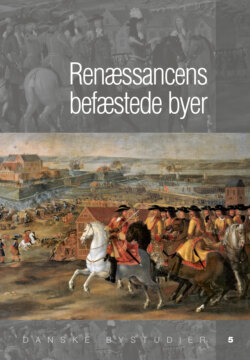Читать книгу RenAessancens befAestede byer - Группа авторов - Страница 9
На сайте Литреса книга снята с продажи.
Summary Introduction
ОглавлениеBy Søren Bitsch Christensen, Director of the Danish Centre for Urban History, editor
The purpose of this volume is to publish recent Danish, Norwegian and Swedish research on the militarized and fortified towns of the Renaissance in the Danish Realm. This realm covered the present-day kingdoms of Denmark and Norway, Schleswig and Holstein (now part of Germany), and Scania, Halland and Blekinge (now part of Sweden). Renaissance is primarily here understood as the period between the Reformation in 1536 and the loss of Scania and Halland to the Kingdom of Sweden in 1660 following the Danish-Swedish War 1658-1660. As a consequence of the civil war leading up to the Reformation and the subsequently strengthened royal power, most of the medieval town ramparts were torn down, and the King took over control of the fortification of Copenhagen. During the next 150 years, but mostly in the first half of the seventeenth century, new warfare tech niques as well as royal centralization caused the creation of continental Renaissance-style citadels in several towns, especially in the border region. In other towns many variations of the citadel concept were adapted.
Apart from Copenhagen, the urban upper-stratum of society was mercantile and hence benefited from good conjunctures until approximately 1630, when the involvement of King Christian IV in the Thirty Years War, with heavy military defeats, created a long crises. The bourgeoisie was hit hard and, among other things, the military commitments they had made in financing the fortification, military duties and civic guards – not least during the Swedish siege of Copenhagen in 1658-1659 – gave it confidence to challenge the political monopoly of the nobility. Absolutism, installed in 1660/1661, gave some recognition to these urban demands. After 1660 fortress towns once again were centralized to a few, but strategically important locations. Copenhagen, Rendsburg, Glückstadt, and Fredericia, to mention the most important fortress towns or citadels, remained fortied until the nineteenth century, while in Oslo and Elsinore, civil life existed side-by-side with the famous castles of Akershus and Kronborg. New citadels were also built in Norway, in Frederikstad and Fredriksten.
The articles in the books stress the importance of viewing the urban communities during the Renaissance as military – and not only commercial – entities, and they trace the legacy of the military activities both in a material and social sense.
